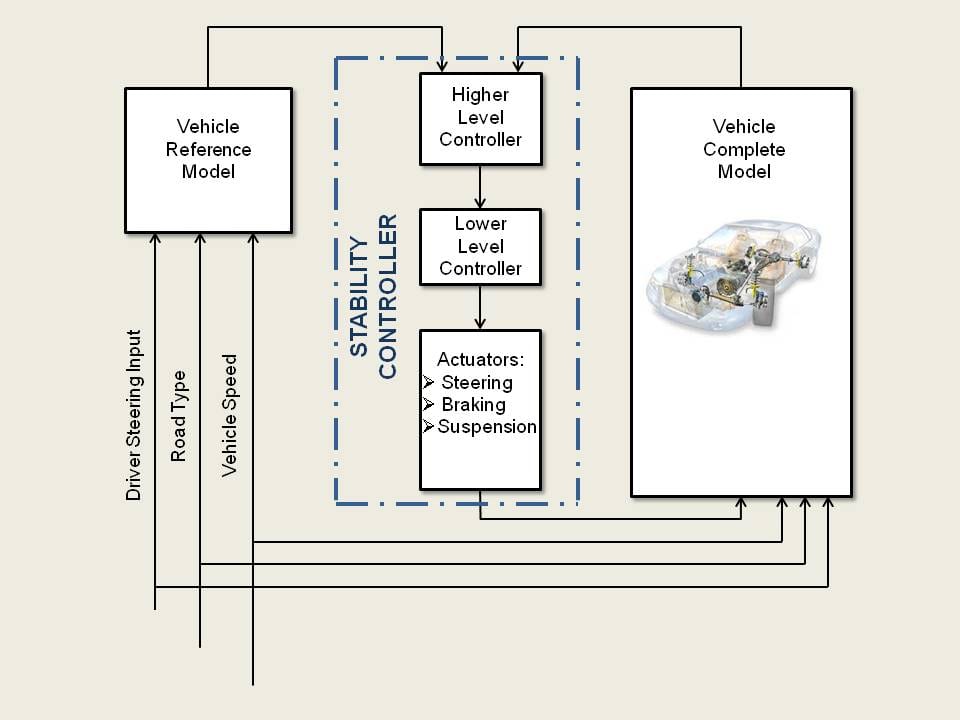Projects List
- Soft nonholonomic constraints: Theory and applications to optimal control
- Design and Modeling of a Novel Single-Actuator Differentially Driven Robot
- Depth estimation from edge and blur estimation
- Occlusion detection & handling in monocular SLAM
- Autonomous Underwater Vehicle for Monitoring of Maritime Pollution
- Teleoperation of UAV with Haptic Feedback
- Advanced Control Strategies for Unmanned Aerial Vehicles
- Ground Vehicles Driver Assistance and Active Safety Control Systems
- Pedestrian Detection
- Towards Fully Autonomous Self-Supervised Free Space Estimation
- Object-Oriented Structure from Motion
- Humanoid Fall Avoidance
Ground Vehicles Driver Assistance and Active Safety Control Systems
Vehicle roll-over and skidding are the main contributors of accidents and crashes on the road, which underline the importance of active control systems to enhance the safety of ground vehicles. Automotive active safety control systems assist the driver by preventing or mitigating the loss of maneuverability by quickly and judiciously intervening at the limits of vehicle handling. Three subsystems: steering, suspension, and braking (or driveline) can play an active role in affecting the vehicle’s stability when electronically controlled. The aim of this research is to synthesize controllers that integrate and coordinate the intervention of the braking, steering, and suspension actuators to improve vehicle stability depending on the driving conditions. The goal is to fully exploit the collaboration potential between the subsystems to create a harmonious vehicle system. Since each controller operates on a particular objective, this may lead to conflict and result in degradation of the overall performance. A supervisory chassis controller insures that the three controlled subsystems interact, simultaneously, to reach a common objective.
By: Carine Bardawil


